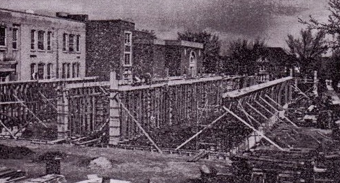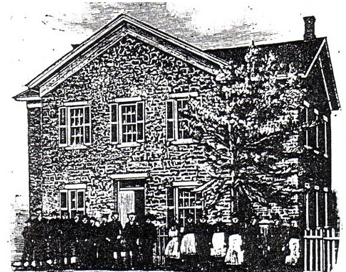This blog series is adapted from a memoir by Beatrice Zweber Mahowald of New Market. Her grandson, Pat Mahowald, compiled her autobiography with photographs and family research. Beatrice took over the household management on her family’s farm at age 15, after the death of her mother and the marriages of her older sisters. Part I can be read here.
What was the worst was when the threshers would come. They were always there for two days, for breakfast, afternoon lunch, and late supper. In those days there weren’t any ice boxes or refrigerators in the county and it was a lot harder to get the food ready. My sisters always came home to help with the cooking for the threshers, otherwise I wouldn’t get the dishes washed. And there were so many to wash.
I would bake fresh pie for dinner, cake for supper, and fresh coffeecake and buns for lunch. The bread I’d bake before the threshers came. We all worked hard all day. We cooked too good, that’s why the threshers ate so much.
This certain year I knew I would have the threshers for breakfast. They were going to move the machine over early in the morning, so that night before I went to bed, I set the table and I had the potatoes all peeled and cut up so I could put them in the frying pan as soon as I would get downstairs. My sisters didn’t help me with the breakfast. I was alone for that, and here my dad called me about 10 pm and said the threshers are here and they didn’t have any supper. They moved over to our place after dark because they didn’t want to eat another meal at the place they were. They said the food was so terribly bad there, so I got up and fried the potatoes, went in the basement, got up some fried down pork (which I also had planned for our breakfast) and I made them a good supper. Today I would say, “I’m in bed. Let them go home or go hungry.”
I had all those dishes to wash and dry as the whole thresher crew came along. I must have fed a dozen men. It was late when I got to bed, and the next morning I had to be up early. I was really mad at those threshers but it was Dad’s fault. He should have told them I was asleep. Just think of how nice the farmers’ wives have it nowadays. They have combines now, so they only need to feed their own family.
Some of the threshers used to sleep at the farmer’s house and they were so dirty when they slept in the beds two nights the sheets were black dirty, and they would dump the straw from the their clothes on the floor. I was always so glad when we were done with the threshing.
Lead image: Threshing at Augustus Keup Farm, 1896





















